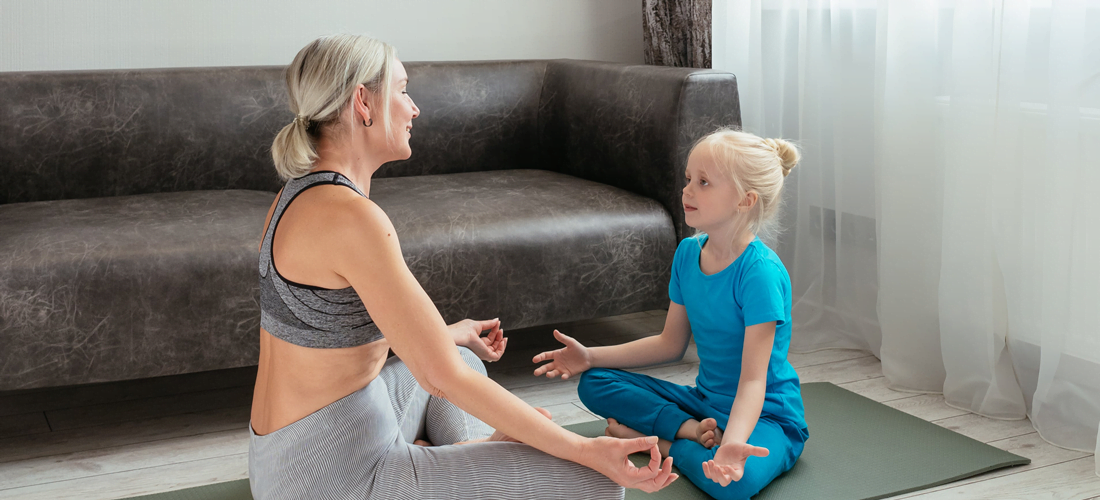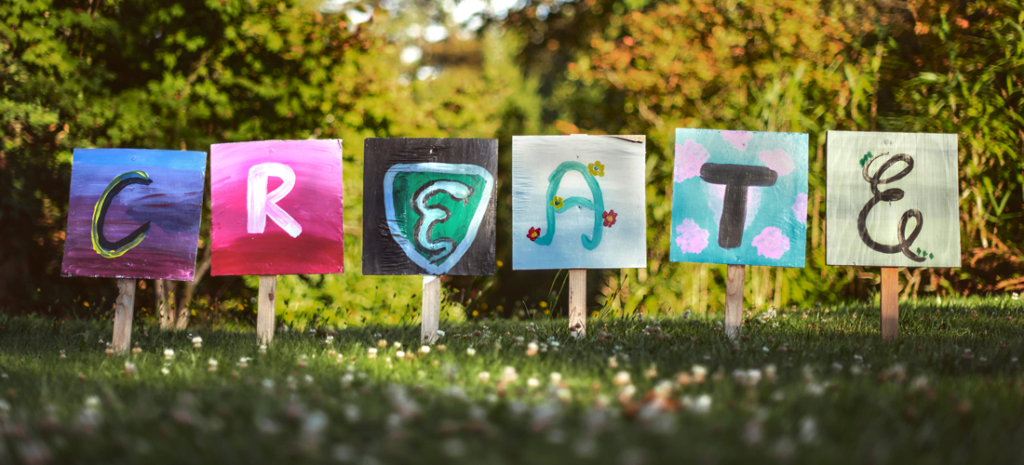Ever thought about what kind of superpowers your child could possess? Nah, not talking about flying or x-ray vision here – we’re chatting about mindfulness. You might be thinking, “Mindfulness, really? Isn’t that something for adults?” But it’s not! Mindfulness is like the best gift we can pass on to our young ones, and it’s never too soon to begin.
Picture this – your kid mastering their emotions, dealing with stress like a boss, and staying sharp amid the crazy hustle of daily life. That’s the magic of mindfulness. It’s like handing them a personal GPS for life, helping them ride the rollercoaster of life confidently and with a cool head.
Join us as we explore the world of mindfulness and why it’s essential to introduce it to your children at a young age. Trust us; the benefits are incredible, and the earlier you start, the more it can shape their future. So grab a cup of tea (or coffee, if you’re really in need of some mindfulness yourself), and let’s dive into this adventure together. Right here, right now, your child’s journey to mindfulness begins.
Benefits of Mindfulness in Children’s Well-Being
Mindfulness offers a wealth of benefits in children’s well-being.
- Emotional Regulation: Mindfulness helps children understand and manage their emotions better. It enables them to pause and reflect rather than reacting impulsively, resulting in healthier emotional responses.
- Improved Focus: By teaching kids to concentrate on the present moment, mindfulness enhances their attention span and focus. This can aid their academic performance and learning capabilities.
- Reduced Anxiety: Mindfulness practices, like deep breathing or body scans, can help soothe anxiety and stress. These techniques offer them tools to calm down in tense situations.
- Better Sleep: Mindfulness aids relaxation and can lead to improved sleep patterns. A good night’s sleep is essential for overall well-being and functioning.
- Enhanced Self-Awareness: Through mindfulness, children learn to tune into their bodies and minds. This self-awareness can foster self-esteem and a positive self-image.
Mindfulness is a journey, not a destination. Regular practice will yield the best results and contribute to the overall well-being of your child.
Age-appropriate Mindfulness Concepts
So, are you wondering how to introduce age-appropriate mindfulness concepts to your little ones? Let’s start with the youngest. For preschoolers, mindfulness can be as simple as a ‘Listening Game‘. Encourage them to close their eyes and identify different sounds around them. This will help them focus on the present moment and tune into their senses. It’s like a fun game of ‘I Spy’ but with their ears!
For elementary school kids, a ‘Breathing Buddy‘ activity can work wonders. They can lie down on the floor, place a stuffed animal on their belly, and watch it move up and down as they breathe. This not only teaches them about deep breathing (an important tool for calming down) but also helps them focus on the here and now.
And for the older ones in middle and high school, mindfulness can be taught through ‘Body Scan‘ exercises. They can sit or lie down comfortably, close their eyes, and ‘scan’ their body from head to toe, paying close attention to how each part feels. This is a great way to connect with their body and notice any tension or discomfort. It’s like they’re their own detectives, uncovering clues about their body and mind!
Mindfulness is not a one-size-fits-all thing. Each child is unique and might prefer different techniques. Feel free to mix and match or even create your own mindfulness activities! The goal is to make it enjoyable and beneficial for them.
Setting the Foundation
Creating a Mindful Environment
Creating a mindful environment at home plays a key role in promoting mindfulness in children. Here are a few steps you can take to set the right atmosphere:
- Decluttering and Organizing Spaces: A clean, well-organized space can greatly enhance a child’s ability to focus and engage in mindfulness practices. Clutter can often cause distraction and stress, so start by decluttering your child’s study and play areas. Keeping spaces tidy, minimalistic, and organized can make a huge difference.
- Reducing Distractions: Reducing distractions is another crucial aspect of creating a mindful environment. This might mean turning off the TV, putting away flashy toys, or ensuring the room is quiet during mindfulness activities. The goal is to provide a peaceful environment that allows your child to concentrate on the present moment without unnecessary interruptions.
- Promoting a Sense of Calm: Finally, cultivating a sense of calm can significantly aid mindfulness. This could involve playing soft background music, introducing calming scents into the room, or utilizing soft, warm lighting. You could even incorporate elements of nature like plants or a small water fountain. These small changes can help foster a serene environment conducive to mindfulness.
Every child is different, so it’s important to tailor the environment to suit your child’s individual needs and preferences. By focusing on these elements, you’ll be setting a strong foundation for mindfulness practice.
Modeling Mindfulness
One powerful approach to encouraging mindfulness in children is through modeling mindful behaviors. Children often learn best by observing the actions and behaviors of those around them. This makes parents, caregivers, and educators prime role models for demonstrating mindfulness.
Parents and Educators as Role Models: Parents, caregivers, and educators have significant influence over a child’s behavior and attitude towards mindfulness. By demonstrating mindfulness in their own daily activities and responses, they can effectively model the practice for children. This might involve showing patience, attentiveness, and presence in all interactions. Children will pick up on this behavior, which can help them understand and adopt mindfulness practices in their own lives.
Demonstrating Mindful Behavior: This involves consciously integrating mindfulness into daily routines and activities. For instance, during meal times, take a moment to express gratitude for the food, discussing its source and the effort that went into making the meal. At bedtime, engage your child in mindful breathing exercises to create a relaxed environment for sleep. By regularly demonstrating such mindful behavior, children get familiar with the concept and learn to incorporate mindfulness into their own routines.
Through consistent modeling of mindful behaviors, we can embed mindfulness as a natural part of a child’s day, making it an accessible and enjoyable practice.
Mindfulness Activities for Children
Mindful Breathing Exercises
Mindful breathing exercises are a simple yet effective way to encourage mindfulness in children. These exercises help children focus on the present moment and their bodily sensations, diverting their attention away from distractions. Over time, practicing mindful breathing can help improve children’s focus, reduce anxiety, and promote a sense of calm.
1. Breathing with Awareness
Breathing with awareness is all about paying attention to our breath as it goes in and out. Here’s how you can encourage your child to do this:
- Find a quiet place where your child can sit comfortably.
- Ask them to close their eyes and take a deep breath in, then slowly breathe out.
- Encourage them to pay attention to how the breath feels as it enters and exits their nose or mouth. They can notice the rise and fall of their chest or belly as they breathe.
- Do this for a few minutes each day. With time, this practice of breathing with awareness can help children become more mindful of their bodily sensations and thoughts.
2. Counting Breaths
Counting breaths is another excellent exercise to help children become more mindful. Here are the steps:
- Have your child sit comfortably and close their eyes.
- Tell them to take a deep breath in, and then breathe out slowly.
- While doing this, ask them to count each breath. They can count “one” as they breathe in and “two” as they breathe out, up to ten.
- After reaching ten, they can start back at one again.
- The count provides a focus point, allowing the child to keep their attention on their breath, reducing distractions and promoting mindfulness.
These mindful breathing exercises, when practiced regularly, can become an integral part of a child’s routine, promoting an overall culture of mindfulness.
Mindful Sensory Exploration
Mindful sensory exploration is a powerful way to encourage mindfulness in children. It involves harnessing the five senses to become more aware of the present moment. This practice allows children to tune into their environment in a focused, but relaxed way, and it can help them better manage their emotions and responses.
The Five Senses Game
- The Five Senses Game is a fun and easy way to get started with mindful sensory exploration. In this game, children are invited to use each of their five senses one by one.
- You can start by asking your child to close their eyes and focus on what they can hear. After a minute, ask them to describe the sounds. Repeat this exercise with the other senses – smell, touch, taste, and sight.
- This game helps children to stay in the moment, and acknowledge their experiences without judgment. It enhances their sense of mindfulness by bringing attention to their immediate sensation and perception.
Mindful Nature Walks
- Mindful nature walks combine the benefits of physical activity and mindful sensory exploration. For this activity, take your child for a walk in a natural setting like a park or a forest.
- Encourage them to be aware of the sounds they hear, the sights they see, the textures they feel, and the smells they experience. You can even bring a small snack like a piece of fruit for them to eat mindfully, bringing in the sense of taste.
- These walks are not about reaching a destination but rather immersing oneself in the journey. They provide a calming environment where children can practice mindfulness and learn to appreciate the beauty of nature around them.
Mindful Art and Creativity
Taking a mindful approach to art and creativity can provide a multitude of benefits for children. It helps them hone their focus, experience their emotions without judgment, and express themselves creatively. This meditative process fosters an atmosphere of calm and relaxation, encouraging mindfulness.
Coloring and Drawing Mindfully
- Mindful coloring and drawing involve focusing on the activity at hand, paying close attention to the colors, textures, and motions involved. You can start by providing your child with a coloring book or a blank piece of paper. Encourage them to choose their colors intentionally, notice how the crayon or pencil feels in their hand, and how it feels to move it across the paper.
- The goal is not to complete a picture perfectly but to experience the process fully. Ask them to be aware of their thoughts and emotions during this activity without judgment. Discuss their artwork once they’re finished, asking about their feelings and experiences as they were creating it.
Creative Expression Through Art
- Art is a powerful tool for self-expression and can be used to cultivate mindfulness. Encourage your child to create artwork that reflects their thoughts, feelings, or mood at the moment. They can use any medium that resonates with them – painting, sculpting with clay, collage-making, or even digital art.
- During this process, remind them to be fully present, immersing themselves in the act of creation. Ask them to observe their thoughts and emotions, how their body feels, the texture of the materials they’re using, and the sounds they make. Once the artwork is complete, have a conversation about it, asking them to express what the process was like for them and what the art piece means to them.
Both these methods use art as a form of meditation, allowing children to stay present, express their creativity, and improve their mindfulness skills.
Mindful Storytelling and Reading
Storytelling and reading are powerful ways to encourage mindfulness in children. Choosing books that center around themes of mindfulness, emotions, and self-awareness can subtly introduce these concepts in an engaging and age-appropriate way. Look for children’s books that discuss feelings, empathy, kindness, or even books explicitly about mindfulness for kids. They often use scenarios and characters that children can relate to, making the abstract concept of mindfulness more concrete and understandable.
When reading these books, read with intention. Instead of rushing through the story, take your time. Pause after emotional or important moments to discuss them. Ask your child how they think the character is feeling, what they would do in the character’s place, or what they notice about the character’s behavior.
These questions encourage your child to think deeply about the story, enhancing their understanding and awareness. Always remember that the goal of mindful reading is not just comprehension, but also connection and reflection. This mindful approach to storytelling and reading can help children better understand their emotions, cultivate empathy, and improve their mindfulness skills.
Mindful Movement and Yoga
Mindful movement and yoga are effective ways to promote mindfulness in children. These activities engage kids physically but also provide them with strategies for relaxation, concentration, and self-awareness.
Let’s start with yoga which often involves coordinated breathing and movements, teaching children to be present in each moment. Simple yoga poses suitable for children include the Tree Pose, where they stand on one leg and try to balance, or the Butterfly Pose, where they sit down, join the soles of their feet together, and flap their knees like wings. Both poses encourage focus and body awareness.
Mindful movement games also promote mindfulness by combining physical activity with mental focus. “The Mindful Ninja” is a fun game: children move in slow motion, like a ninja, while trying to accomplish a task like bypassing obstacles or reaching a goal. In “Freeze Dance,” kids dance to music then freeze when the music stops, emphasizing focus on both the music and their own movements.
In each activity, encourage children to pay attention to how their bodies feel during each movement. Are their muscles tight or relaxed? Fast or slow? This kind of mindful observation can increase body awareness and improve overall mindfulness.
Encouraging Mindful Communication
Encouraging mindful communication in children is a powerful way to enhance their mindfulness skills. This involves teaching them to listen attentively, speak thoughtfully, and express emotions honestly.
Active Listening
Active listening is a key skill for children to develop as it not only improves their communication abilities, but supports emotional intelligence and empathy. It’s about really hearing and understanding what someone else is saying, rather than just waiting for one’s turn to speak.
Teaching active listening to children can start with simple activities. You might read a short story, then ask your child to repeat back the main points. Show them how to make eye contact with the speaker and give them examples of how to respond that demonstrate understanding, such as, “What I heard you saying is…” or “It sounds like you feel…”.
Another fun way to practice active listening with children is through “pass the message” games, where one person whispers a message to the next person and so on, until the last person says the message out loud. It’s a fun and engaging way of illustrating how important accurate listening is.
Remember, children learn by example; demonstrating active listening in your interactions with them will encourage them to do the same. This skill is not only valuable for mindfulness, but for all areas of their developing lives.
Empathy and Emotional Understanding
Nurturing empathy and emotional understanding in children is crucial in helping them become emotionally intelligent and compassionate individuals. This involves teaching them to recognize their own emotions and those of others, and to respond with care and understanding.
When children are aware of and understand their feelings, they are more capable of managing them effectively. This emotional understanding also allows them to recognize these emotions in others, leading to greater empathy. For example, if a child understands what it feels like to be sad, they are better able to empathize when they see a friend crying.
To encourage empathy, use everyday moments as teaching opportunities. If a character in a book or on a TV show is upset, talk to your child about how that character might be feeling and why. Allow them to express their emotions, and validate these feelings by sharing that it’s okay to feel this way.
Teaching empathy and emotional understanding is a powerful way for children to learn kindness and compassion towards others. This not only enhances their mindfulness but also equips them with the social skills necessary for developing healthy relationships.
Conflict Resolution Through Mindfulness
Conflict is a natural part of life that everybody encounters, including children. Encouraging mindfulness during these situations can help children handle conflicts more effectively and build resilience. When children are mindful, they are more capable of recognizing their feelings and reactions during a conflict, which can reduce impulsive responses and promote calm, thoughtful actions.
One method to encourage mindfulness during conflict is through guided breathing exercises. When a conflict arises, encourage your child to take a moment to breathe in deeply, hold their breath for a few seconds, and then exhale slowly. This simple act can help them focus on their emotions and reactions, leading to more thoughtful responses.
Another method is teaching them to identify their emotions and express them clearly. Instead of acting out, they might say, “I feel angry because…” This understanding and expression of their feelings can defuse tension and open the door to resolution.
Role-playing is also an effective tool. You can create scenarios that stimulate conflict and guide your child in applying mindfulness techniques. This practice can make it easier for them to use these strategies in real-life situations.
Remember, teaching conflict resolution through mindfulness is a gradual process. But with patience and consistency, children can learn to handle conflicts in a more mindful, empathetic, and effective way.
Mindful Communication Activities
One method to promote mindful communication is the “Talking Stick” game. In this game, only the person holding the stick is allowed to speak. This encourages others to listen carefully and wait for their turn to talk.
Another great exercise is “Feelings Charades”. In this game, children act out different emotions without making a sound, and the others guess what they’re feeling. This helps children to understand and express their emotions more effectively.
Also, regular open conversations about the day can boost mindful communication. During dinner or bedtime, ask kids to share what they felt during the day, what made them happy or sad, and how they handled difficult situations. Encourage them to express without any fear of judgment.
These exercises can help kids communicate in a mindful way, improving their understanding of their own emotions and those of others, and building stronger, healthier relationships.
Mindfulness in Daily Life
Integrating mindfulness into routines
Mindfulness can be seamlessly integrated into children’s daily routines, providing numerous benefits. By incorporating mindfulness into everyday activities, children learn to focus their attention, regulate their emotions, and foster a sense of peace and calmness. This not only improves their emotional wellbeing, but also promotes cognitive development and academic achievement.
Mindful Eating and Mealtime Habits
One effective way to introduce mindfulness into children’s daily routines is through mindful eating. This practice not only enhances appreciation of the food but also promotes healthy eating habits. Consider the following strategies:
- Slow Down: Encourage children to eat slowly, taking the time to really savor each bite. This not only helps with digestion but also allows them to truly experience the taste of their food.
- Gratitude Practice: Encourage children to appreciate the effort that went into making their meals. This could involve thanking the farmers who grew the food, the cook who prepared it, or the universe for providing it.
- Sensory Exploration: Have children describe the taste, texture, smell, and color of their food. This encourages them to engage all their senses and be fully present in the moment.
- Mindful Portions: Teach children to listen to their bodies and eat until they are just full, not until the plate is empty. This helps foster a healthy relationship with food.
- Eating in Silence: Occasionally, try eating in silence for a few minutes, paying full attention to the experience of eating without distractions or conversation.
- Outlaw Multi-tasking During Meals: Discourage watching TV, playing games, or doing homework while eating. Encourage them to focus solely on the food and the act of eating.
- Encourage Cooking: Let kids help prepare meals. This not only makes them more invested in the food they eat, but also gives them a better understanding of what goes into a meal.
Remember, these are just guidelines and it’s important to adapt these strategies to fit your family’s lifestyle and your child’s individual needs. The goal is to teach mindfulness and foster a healthier relationship with food.
Mindful Bedtime Routines
Just as with meal times, bedtime offers a perfect opportunity to instill mindfulness in children. Establishing a mindful bedtime routine can not only aid in better sleep, but also ensure children are ending their day on a calm and positive note.
- Mindful Breathing: Teach children to take deep, slow breaths before bed. This simple exercise can help them relax and let go of any stress or anxiety from the day.
- Bedtime Stories: Use this time to introduce mindfulness concepts through storytelling. There are many children’s books available that incorporate mindfulness lessons.
- Gratitude Journal: Encourage children to write or talk about what they are thankful for from their day. This can inspire positivity and a sense of contentment.
- Body Scan: Guide them through a gentle body scan, where they focus on relaxing each part of their body starting from the toes and working the way up to the head.
- Mindful Music: Soft, calming music or nature sounds can help set a peaceful atmosphere for sleep.
The goal is not to rush through these activities, but to take the time to be fully present and engaged. The key is to make these activities a regular part of the bedtime routine, adapting as necessary to fit your child’s needs. Regular practice can help children develop a more mindful approach to life, improving their overall well-being.
Mindful Playtime
Lastly, mindfulness can be incorporated into playtime. Encourage children to fully engage with their toys or games, noticing all the details and sensations. This can turn play into a mindful experience, promoting focus, creativity, and enjoyment.
Incorporating mindfulness into playtime can be a fun and engaging way for children to practice being in the moment. Here are some strategies to encourage mindful play:
- Mindful Toys: Choose toys that promote mindfulness, such as puzzles, building blocks, or art supplies. These types of toys require focus and creativity, promoting mindfulness naturally.
- Nature Play: Encourage children to explore their environment during outside play. Ask them to notice the textures, smells, and sounds around them. This not only fosters mindfulness but also a love for nature.
- Role-play: Role-play games can help children understand and express their feelings, promoting mindfulness of their own emotions and those of others.
- Mindful Games: Introduce games that encourage mindfulness, such as ‘Simon Says’, where they have to be mindful of the instructions, or yoga poses which require focus and awareness of their bodies.
- Craft Time: Crafting requires concentration and creativity. Encourage children to be mindful of the process, focusing on each step and appreciating their progress.
The goal is not about winning or completing the task but about enjoying the process and being present in the moment. This practice can help children develop a mindful approach to their playtime, enhancing their ability to focus, understand their emotions, and appreciate the world around them.
Mindful Technology Usage
In our increasingly digital world, teaching children mindful technology usage is paramount. While technology offers boundless opportunities for learning and creativity, it’s important for kids to use it in a manner that promotes mindfulness rather than mindless scrolling.
Here are some strategies to encourage mindful technology usage:
- Set Screen Time Limits: Establishing boundaries on screen time can help children develop healthy technology habits. Encourage them to use their screen time wisely and engage in mindful activities, such as educational games or creative apps.
- Choose Mindful Content: Not all screen time is equal. Opt for content that stimulates the mind and encourages active participation, like interactive learning platforms or applications that promote creativity.
- Tech-Free Zones: Creating spaces in the home where technology is not allowed can encourage mindful interaction with the physical world. This could be the dinner table, where conversation is encouraged, or the bedroom, promoting better sleep.
- Discuss Online Behavior: Encourage your children to be mindful of their actions online. Discuss the importance of showing kindness and respect to others, understanding that behind every screen is a real person.
- Mindful Tech Breaks: Teach children to take regular breaks from their screens to stretch, hydrate, or simply observe their surroundings. This not only promotes physical health but also reinforces the habit of mindfulness.
By implementing these strategies, we can help children cultivate a mindful approach to technology usage, balancing the benefits of digital tools with the value of present-moment awareness.
The key to integrating mindfulness into daily routines is consistency. With regular practice, children can make mindfulness a natural part of their lives.
Handling Challenges
Dealing with Resistance and Restlessness
Resistance and restlessness are common hurdles when introducing mindfulness to children. Children, particularly younger ones, might find it difficult to sit still or concentrate on mindfulness practices.
- Emphasize the Fun: Mindfulness doesn’t have to be a chore. Make practices engaging by incorporating games, stories, or creative activities that foster mindful habits. Remember, the goal is to make them look forward to mindfulness sessions.
- Start Small: It’s okay to start with short mindfulness practices. Even a few minutes can have a positive effect. Over time, as their interest and patience grow, gradually lengthen the duration.
- Model Mindfulness: Children learn through observation. Show them the value of mindfulness by practicing it yourself. Let them see you embracing calm and focus in your everyday activities.
- Patient Reinforcement: If resistance persists, gently remind them of the benefits of mindfulness. Validate their feelings and reinforce the idea that it’s okay to have wandering thoughts; the key is to acknowledge them and then return focus to the present.
By understanding and addressing these challenges, we can help children overcome initial resistance and restlessness, paving the way for a mindful future.
Adapting Mindfulness to Different Ages and Personalities
Children are unique, each possessing their own personality, cognitive development, and emotional capacity. Thus, mindfulness practices need to be adaptable to cater to these differences.
- Age-Appropriate Techniques: Adapt mindfulness methods according to the child’s age. For example, younger children might benefit from guided imagery, where they visualize relaxing scenes, while teenagers could engage in activities like yoga or meditation.
- Highlight Interests: Tailor mindfulness activities around children’s interests. If a child loves drawing, introduce mindfulness through art. If they love sports, teach them how to channel their focus during the game.
- Different Personalities, Different Approaches: Children’s personalities should inform the approach to mindfulness. An extroverted, physically active child might respond well to a mindfulness walk or yoga, while an introverted child might engage better with quiet, individual practices such as breathing exercises or journaling.
- Incorporate Variety: Mix up the activities to keep them engaged. Different techniques can be introduced on different days to maintain interest.
- Encourage Self-Expression: Allow them to express their experiences with mindfulness in their own way. This could be through words, art, or any medium they prefer. It helps them better understand their thoughts and feelings, promoting self-awareness and emotional intelligence.
By being flexible and adaptable in our approach, we can better integrate mindfulness into children’s diverse lives, and make it a positive and enriching experience for all.
Addressing Common Misconceptions
As we strive to foster mindfulness in children, it’s important to address common misconceptions that may hinder progress in this endeavor. Here are some key points to consider:
- Misconception 1 – Mindfulness is a religious practice: While mindfulness has roots in Buddhism, it is not inherently religious. It’s a mental state achieved by focusing one’s awareness on the present moment, while calmly acknowledging and accepting one’s feelings, thoughts, and bodily sensations.
- Misconception 2 – Mindfulness is about controlling thoughts: Mindfulness is not about stopping or controlling thoughts, but rather noticing and accepting them without judgment. Children should understand that it’s okay to have thoughts come and go during mindfulness practices.
- Misconception 3 – Only quiet children can practice mindfulness: Mindfulness is not about being still or silent all the time. It’s about being present and aware, regardless of the activity. Even energetic children can practice mindfulness during physical activities like sports or dance.
- Misconception 4 – Mindfulness takes a lot of time: You don’t need hours on end to practice mindfulness. It can be incorporated into everyday moments, like during meals, walks, or before bedtime. Even a couple of minutes focusing on breath, sensations or surroundings can make a difference.
- Misconception 5 – Mindfulness is a quick fix: Mindfulness is not a panacea, but a tool that develops over time. It won’t instantly solve all problems, but can help children manage their emotions better, reduce stress and enhance their overall well-being.
By addressing these misconceptions, we can make mindfulness more approachable, realistic and beneficial for children.
Closing Thoughts on Encouraging Mindfulness in Children
Mindfulness, when practiced regularly, can transform children’s lives in profound ways. It acts as an anchor, grounding them in the present moment — a skill that is particularly beneficial in today’s fast-paced, digitally-driven world. By teaching children mindfulness, we can help them cultivate greater self-awareness, emotional regulation, and empathy, setting the foundation for a life of well-being and emotional resilience.
Let’s envision a society where mindfulness is not an extra-curricular activity, but an integral part of children’s lives — embedded in their daily routines, their education, the way they interact with themselves and others. The beauty of mindfulness is that every moment presents an opportunity for practice. Whether it’s taking a deep, mindful breath before a test, savoring the experience of eating, or noticing the feeling of the wind while playing outside, these are all opportunities for children to engage with the world in a more mindful, present, and compassionate way.
By embracing mindfulness, we are not just teaching children a technique; we are opening a doorway to a more conscious, compassionate, and fulfilling way of life. Let’s step through that doorway together and guide our children towards a brighter, more mindful future.











